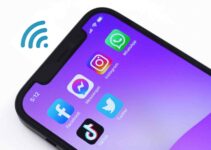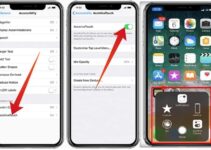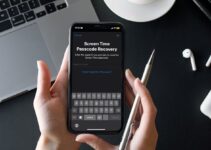Amid the myriad features designed to protect user privacy on mobile devices, there exists a startling figure that seldom hits the headlines: a significant portion of iPhone users have, at some point, stumbled upon a vexing wall – the activation lock. This feature, standing guard over personal information, becomes an unwelcomed gatekeeper when an iPhone is labeled as “Locked to Owner”. With iOS 16.5, Apple users are facing this reality with increasing frequency, prompting a surge in the demand for ways to bypass iPhone locked to owner [iOS 16.5]. While it may seem like a catch-22 situation, there are iPhone unlock methods that are both legal and effective, honing in on iPhone bypass techniques as a beacon of hope for frustrated users.
Unlocking iPhones legally calls for a strategy that adheres to both technical proficiency and respect for digital ownership. Whether through iPhone passcode removal tricks or iOS 16.5 activation lock solutions, there’s a conundrum to untangle – ensuring that the method opted for overrides the lock without breaching ethical boundaries. This article peels back the layers of complexity surrounding this issue, elucidating the spectrum of options available to reclaim possession of a locked iPhone.
Key Takeaways
- Grasping the predicament many face with iOS 16.5’s security features and the quest for unlocking iPhones legally.
- Exploring the various iPhone unlock methods and bypass techniques that align with Apple’s stringent privacy protocols.
- Identifying iOS 16.5 activation lock solutions that are user-friendly, robust, and comply with legal standards.
- Analyzing iPhone passcode removal tricks as a legitimate mechanism to regain control over personal devices.
- Steering through the iPhone bypass landscape using ethical and authorized practices to overcome activation locks.
- Understanding the nuance between breaching security and legitimately regaining access to an iPhone locked to an owner.
Demystifying “iPhone Locked to Owner” in iOS 16.5
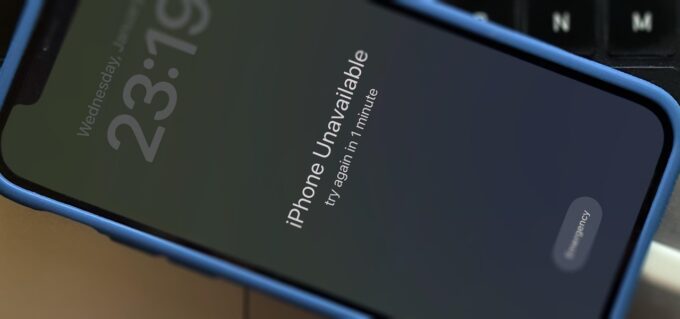
Source: ios.gadgethacks.com
For many, the message “iPhone Locked to Owner” can be an unexpected obstacle, particularly after purchasing a used iPhone or following an iOS update. With iOS 16.5 elevating the activation lock feature, this security measure ensures that resetting an iPhone doesn’t equate to instant access. Instead, reactivation mandates the original owner’s Apple ID or the device screen passcode. This stringent protocol, designed primarily as a deterrent against theft, is equally effective in preserving user privacy against unauthorized access following a factory reset.
The activation lock triggers once ‘Find My iPhone’ is turned on, standing guard over the owner’s personal information. This explains the “iPhone locked to owner” meaning: a shield against data breaches. To navigate this security feature, a robust understanding of iOS 16.5 unlock tips can be immensely helpful. Keeping user data under lock and key, Apple’s implementation prioritizes rightful access over convenience—a move that aligns with industry standards for data protection.
Below, find a concise guide outlining what the lock means for users and how it interacts with the broader iOS ecosystem:
- An iOS 16.5 unlock tip is recognizing that the lock binds the device to a single Apple ID.
- Understanding “iPhone locked to owner” meaning helps clarify why simply resetting the device doesn’t remove the lock.
- Considering iPhone security bypass techniques often leads to exploring Apple’s official channels or seeking the original owner’s aid.
| Feature | Functionality |
|---|---|
| Find My iPhone Activation Lock | Prevents reactivation without original Apple ID and password |
| Factory Reset | Does not disable Activation Lock |
| Screen Passcode | Mandatory for unlock without Apple ID |
Delving into the concept of an “iPhone locked to owner,” it’s clear that Apple has invested heavily in creating a secure iOS environment. Users desiring access to locked devices must do so with an understanding of the delicate balance between robust security measures and user accessibility—an equilibrium that iOS 16.5 has been carefully calibrated to maintain.
Ways to Bypass iPhone Locked to Owner [iOS 16.5]
Finding yourself in possession of an iPhone that’s locked to its owner can be quite the conundrum. With the advent of iOS 16.5, users seek out methods on how to unlock an iPhone without the owner, aim to bypass iPhone passcodes, and hunt down iPhone passcode removal tricks—all while staying within the boundaries of the law. The journey towards unlocking such a device can be arduous, but not impenetrable, given the correct approach and mindful adherence to legal constraints.
Scenarios Where Bypass is Possible
Certain conditions can lay the groundwork for successfully bypassing an iPhone’s activation lock. One such method includes employing previously-known screen passcodes—a straightforward solution for unlocked devices. Alternatively, the cooperation of former owners through iCloud to disassociate the iPhone from their account is another potential pathway. Still, for those venturing into the territory of DNS configuration as a means to iOS 16.5 unlock tips, success rates vary, and the technique remains more a nod to previous versions of iOS than a standard for the latest iterations.
Legal Implications of Bypassing Activation Locks
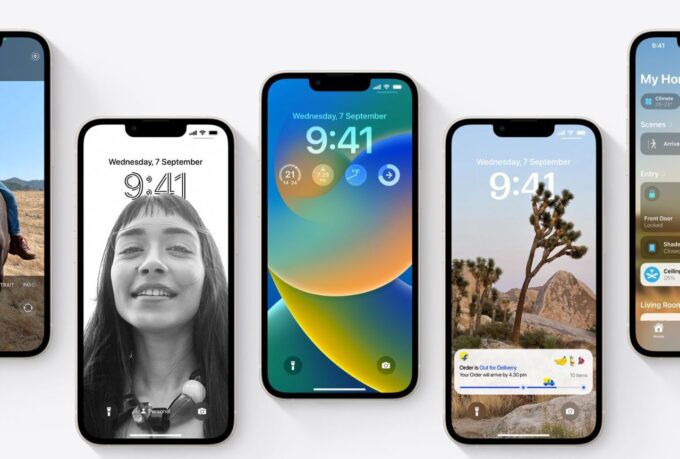
Source: ijunkie.com
Unlocking iPhones legally does not just rest in the realm of technical action—it encompasses respect for property rights and due diligence. Activation locks serve a purpose; thus, bypassing them without consent edges on the legal infringement of the rightful owner’s property. This is of particular concern when the iPhone in question is lost or stolen. To navigate these legal waters securely, involve the previous owner to perform the unlock, or, where necessary, engage Apple Support with proof of purchase and ownership to maintain legitimacy and ethical responsibility.
Impact on Device Functionality and Security Post-Bypass
Suppose one manages to skirt the lock and access the iPhone—a feat certainly not lacking in effort. In that case, it’s essential to consider how various unlock methods can impact the functionality and security of your newly accessed device. Resorting to third-party software for your iOS 16.5 unlock tips may leave you with a device crippled in cellular or iCloud-related functions. This protective measure aims to deter unwarranted use, but it also highlights the delicate balance between granting access and securing the device from potential unauthorized exploitation.
Conclusion
In the realm of iOS device security, particularly for those with iPhones running on iOS 16.5, understanding the various iPhone unlock methods is crucial when one encounters a device that is locked to its original owner. Maneuvering through this intricate process involves not just technical savviness but also a firm adherence to legalities. It cannot be overstated that the integrity of the device’s security should remain uncompromised, even while exploring Ways to Bypass iPhone Locked to Owner [iOS 16.5].
Those faced with this predicament have a spectrum of solutions at their disposal, from the simplicity of inputting a previously known passcode to the utilization of iCloud’s features for removal of the device from its associated account, and even towards professional resources such as reputable unlocking software. However, the critical element remains to tackle the issue within the legal framework, ensuring that any method employed respects the ownership rights and maintains the robust security that Apple devices are renowned for.
Ultimately, the ability to overcome the iPhone security bypass challenge lays the foundation for keeping iOS experiences personal and secure. Users are encouraged to immerse themselves in the knowledge of Apple’s security measures, understanding the various layers and how they can be navigated responsibly. Thus, when legal and ethical measures are prioritized, the pathway to unlocking an iPhone while preserving its functional integrity becomes clear, demonstrating the balance between security sophistication and user access in the digital age.
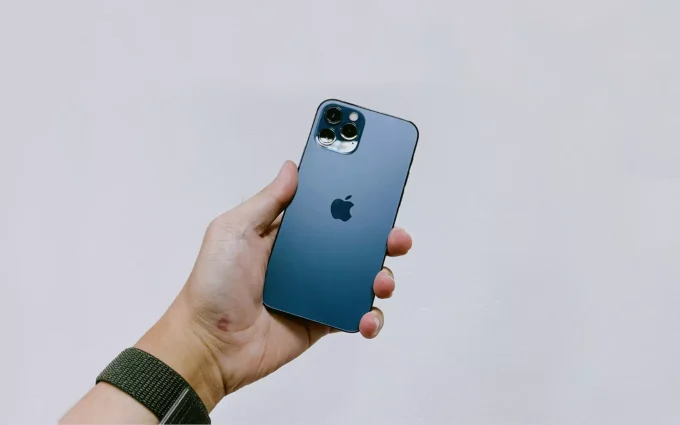
Source: sdspanama.com
FAQ
What does “iPhone Locked to Owner” mean on iOS 16.5?
“iPhone Locked to Owner” indicates that the iPhone has an activation lock enabled, typically after a factory reset with ‘Find My’ turned on. This feature is designed to prevent unauthorized access and requires the original Apple ID and password or a known screen passcode for reactivation.
Are there any legal ways to bypass the iPhone Locked to Owner message?
Yes, there are legal ways to bypass the iPhone Locked to Owner message, such as getting the screen passcode from the previous owner, requesting them to remove the device from their iCloud account, or having Apple Support assist with the unlock process, provided you have valid proof of purchase.
Can DNS settings be reconfigured as an iPhone unlock method?
Configuring DNS settings is a known bypass technique that may work on older iOS versions, but its effectiveness on iOS 16.5 is generally low. It is a harmless method but often does not lead to a successful bypass of the activation lock.
What should be done if you acquire an iPhone that’s locked to its owner?
If you acquire an iPhone that’s locked to its owner, you should contact the previous owner for the passcode or their Apple ID credentials to remove the device from their account, or reach out to Apple support with proof of purchase for assistance.
How can third-party unlocking software affect an iPhone’s functionality?
Using third-party unlocking software can potentially limit certain functions on the iPhone, such as cellular services or iCloud access, because these restrictions are designed to protect the device from unauthorized use.
Is it possible to unlock iPhone without knowing the password?
Without knowing the password, it is very difficult and typically not advisable to try to unlock an iPhone due to security reasons. Legally, the best way is to contact the previous owner or seek help from Apple with the necessary documentation proving ownership.
Are iPhone passcode removal tricks safe and effective?
The safety and effectiveness of iPhone passcode removal techniques can vary greatly. Some may cause data loss or compromise the device’s security, while others might not work on the latest iOS versions. It’s best to proceed with caution and consider legal implications.
What implications could bypassing the iPhone lockscreen have?
Bypassing the iPhone lockscreen without proper authorization can lead to legal consequences, compromise phone security, and possibly limit the phone’s functionality. It is crucial to follow legitimate methods to ensure compliance with laws and maintain device security.

